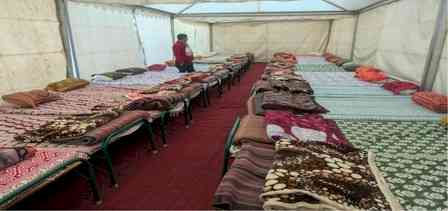This is how digital-savvy Jamtara youth conned thousands - and still do
A sleepy town in the tribal region of Santhal Pargana in Jharkhand, Jamtara gained notoriety as a cyber-crime hub when over half of the crimes, committed by fraudsters posing as bank managers, in the country were traced back to this town not long ago.

Nishant Arora
New Delhi, Aug 27 (IANS) A sleepy town in the tribal region of Santhal Pargana in Jharkhand, Jamtara gained notoriety as a cyber-crime hub when over half of the crimes, committed by fraudsters posing as bank managers, in the country were traced back to this town not long ago.
Hundreds of digital-savvy local youth got expertise in committing new-age cyber crimes, with simple web-connected mobile phones in their hands.
Their modus operandi was simple -- make random calls to a series of numbers from a SIM acquired via a fake ID, have a companion stand by with another mobile phone on which the details of ATM or debit cards and the OTP will be filled in fast.
Once the money from the account is transferred into an e-wallet, it gets immediately out of it.
According to Sweta Kumari Barnwal, Assistant Professor in the Department of Electronics and Communication Engineering at Arka Jain University in Jamshedpur, the mobile phone worked as a cyber cafe for them.
In a report on cyber crime growing vigorously in Jamtara, published in the International Journal of Research in Engineering, Science and Management, she described their modus operandi.
"After shortlisting the phone numbers of people from different parts of India to call posing as bank managers, the action begins. The most common tactic is impersonation. They make calls posing as bank managers, getting their victims to share bank account and card details, and then use the information to move the money to their accounts," she wrote.
Typically, targets are told that their ATM card has been blocked and that if it's not renewed soon, it will remain inactive.
The Jamtara youth will also give lucrative offers to their victims, such as heavy loans with low interest, credit cards with higher limits, or they will just scare the victims that their bank account or ATM would be disabled if they did not provide details.
"Then they ask for the 16-digit card number and its details. While on the call, self or one of them feeds that information in an e-wallet, including the CVV number, and expiry date of the card. Then, they ask the victim to share an OTP message they would be receiving from the bank, which is essential for the criminals to transfer money from the victim's account to an e-wallet," explained Barnwal.
The e-wallet is already linked with a bank account opened solely for the purpose --mostly a fake bank account opened with fraudulent KYC documents.
"Very soon, the money is withdrawn and distributed among everyone involved in the crime. Not all involved in the crime have e-wallets; the ones that do become the centrepiece of this entire chain," Barnwal noted.
Since it is difficult to transact through popular e-wallets owing to stringent KYC documentation, they discovered a bunch of e-wallets including Tapzo, TMW, Kitecase and several Chinese ones.
"They always try to find a new e-wallet, for this they take account on lease from the respective users and for that, they pay some amount to that user. Police have been tightening the noose around the networks of SIM card sellers, e-wallet companies and bank accounts involved in this chain and have aggressively moved on the local cybercrime networks," the professor wrote in the paper.


 IANS
IANS 










